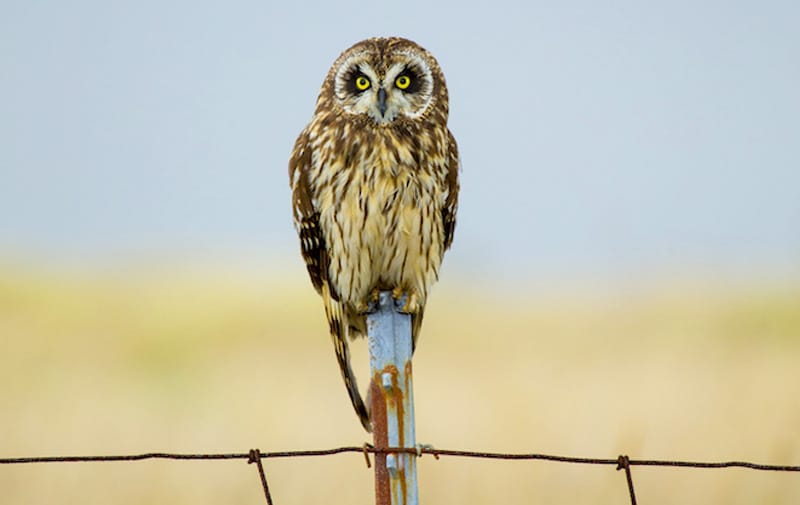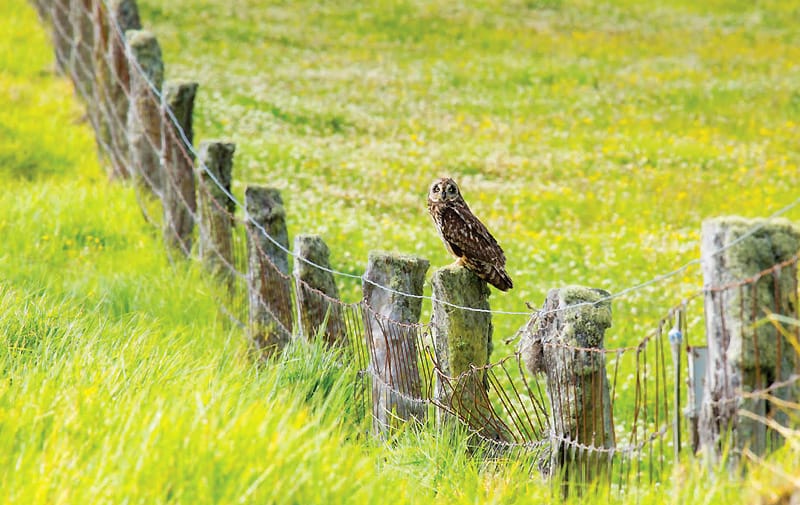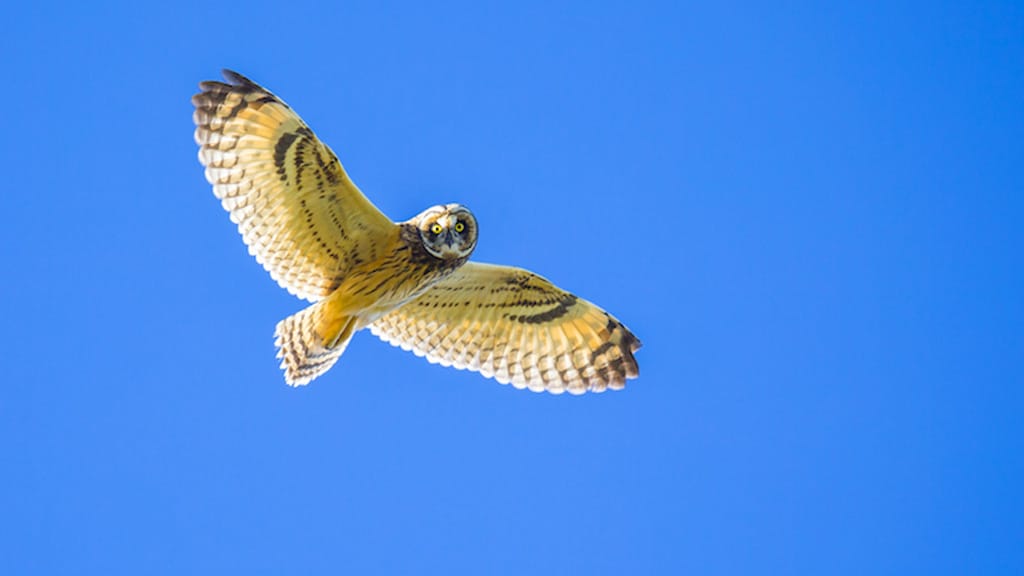In Hawaiian culture, ‘aumākua are deified ancestors who often took the form of animals, such as the native pueo, a Hawaiian shorteared owl.
Wahi a ka ‘ike a ka Hawai‘i, he kupuna ho‘i ka pueo i ho‘olilo ‘ia i akua, he manu mana nō ia. Ma ka nānā ‘ana i ka heluna nui o ko O‘ahu mau pueo a me ke kuhi ‘ana i nā ‘āina kula mau‘u e lako ai ka pueo i ka ‘ai, aia nō ke mana‘olana nei ka po‘e mālama ‘āina i ka ulu ‘ana o ka hoi o ke kaiāulu ma ka ‘imi noi‘i a ho‘omalu pono ‘ana iā lākou.
Pueo, with their piercing yellow eyes and faces ringed with white plumage, are active in the hours between early morning and dusk, unlike most short-eared owls and the barn owls that have recently taken up roost in Hawai‘i. They hunt small prey, including birds, bats, insects, and rodents and make their nests in grassland areas. Streaked in shades of brown and white, pueo were prized for their feathers, which were used to make kāhili, the feather standard denoting Hawaiian ali‘i (royalty).

One story, as told in Thomas Thrum’s 1892 version, recounts of an O‘ahu man named Kapo‘i who came upon a pueo’s nest and stole seven eggs. As he prepared to cook the eggs, Kapo‘i heard the nest’s owner calling for their return. Kapo‘i took pity on the pueo and called it down so that he could return what he’d stolen.
Kapo‘i took the owl as his ‘aumakua and built a heiau in its honor. But the high chief of O‘ahu, Kākuhihewa, called the heiau’s construction an act of rebellion and commanded that Kapo‘i be seized and sacrificed. On the day he was to be killed, the sky turned black with owls that had come from across the islands to do battle. Kākuhihewa and his warriors fought back but were outmatched by the beaks and claws of the pueo.
Those places on O‘ahu where the owls gathered before battling Kākuhihewa’s warriors are marked by the “pueo” in their names: pueo from the islands of Lāna‘i, Maui, Moloka‘i, and Hawai‘i gathered at Kalapueo, in Makapu‘u; pueo from the Ko‘olau districts of O‘ahu assembled at Kanoniakapueo, in Nu‘uanu Valley; and those from Kaua‘i and Ni‘ihau met at Pueohulunui, near Moanalua.

The University of Hawai‘i’s Pueo Project is coming to the aid of the mysterious, majestic birds of prey. Today, pueo continue to roam Hawaiian skies and are still considered ‘aumākua by some families. O‘ahu’s current pueo population is estimated to be around 800, though it could range from 12 to 2,000. Urbanization of its habitats has devastated the population, as have invasive predators such as rats, mongoose, and cats that eat pueo eggs and cause the birds to flee their nests .
By monitoring the pueo population on O‘ahu and locating critical habitats, the Pueo Project hopes to ignite community interest in scientific research and Hawaiian cultural practice.
Learn more at https://www.pueoproject.com
